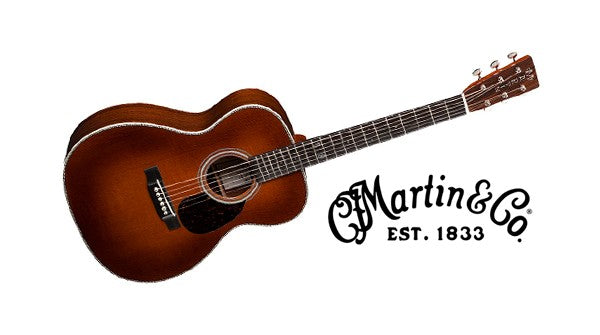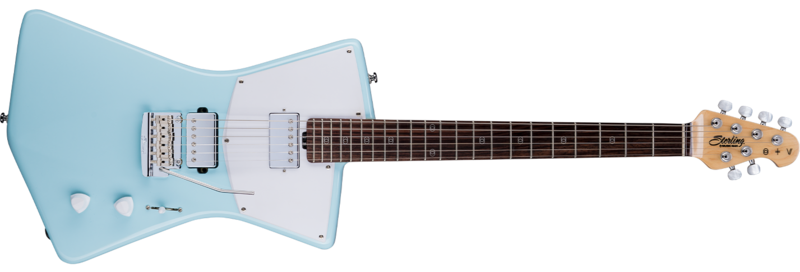Your Cart is Empty
Winter is Coming: Tips for Getting Your Fretted Instruments Through the Winter Unscathed
April 10, 2020 5 min read

Winter is coming -- it’s unavoidable and relentless. Everywhere you go there will be forced-air heat sucking valuable moisture from the air and freezing temperatures marring and cracking finishes and causing wood to bend and warp. Hands and lips become chapped, sinuses become dry and inflamed, and valuable musical instruments suffer a litany of problems that threaten their tone and even their structural integrity.
Stringed and fretted instruments like guitars, basses, banjos and mandolins are made primarily from wood. Your guitar breathes and expands and takes in moisture from the environment naturally. Before your instrument was built, that wood absorbed water and nutrients from its environment in a natural process of expansion and contraction and growth. Despite now being in a new form, the environmental conditions will continue to make the wood in your instrument bend, warp, expand and contract.
Winter cold and reduced humidity threaten to damage your fretted instrument unless you take the proper steps to protect them from damage. Everything from warped necks and sharp frets to cracked and marred finishes and damaged bridges (especially on acoustic guitars) will likely occur when your guitar is exposed to the environmental conditions that visit us each winter. Here are some tips you can take to protect your fretted instruments from the scourge of winter.
Tip #1: Store Your Equipment in a Climate Controlled Environment
Storing your guitars, basses and other fretted instruments in unfinished attics, cars, garages and unfinished basements may save space in your home or studio, but it certainly isn’t the best thing you can do for your guitars and basses. Unfinished basements and attics can get cold enough for pipes to freeze in the Adirondacks, and very close to freezing from time to time even in the South. Generally speaking, unless you live in a tropical environment, it is essential to keep your fretted instruments in warm, climate-controlled environments all year around. (Of course, living in Florida may cause a different set of problems such as excessive heat and humidity...)
Heated environments, however, aren’t always climate controlled. As mentioned earlier, forced air heat literally sucks the moisture out of the environment, making it excessively dry which can cause harmful drying of the timbers in your guitars and basses. If your guitars or basses have been in an excessively dry environment for a considerable amount of time, a great way to restore the humidity to desirable levels is to use a guitar and case humidifier.
Guitar humidifiers, like the D'Addario Planet Waves Guitar Humidifier Kit works by reverse osmosis, restoring the humidity level around your guitar naturally. Products like guitar humidifiers safely and quickly restore the humidity level of your guitar and case, revitalizing your once dried out instrument, giving it new life and improved tone, saving it from potentially irreversible damage.

Tip #2: Store Your Guitar In Its Case
Another important storage tip is to always keep your guitar in its case!

Cases aren’t just for the safe transport of your guitar, bass or other fretted instrument, the case also provides its own little storage environment that is better for your guitar or bass than anywhere else in your home or studio. Leaving guitars out on stands or hanging on the wall may make your home or studio look awesome, but it is not what is best for your instruments, especially in the winter. Unless your home or studio is vigilantly climate controlled, your case is the safest place for your guitar to be stored. If you didn’t buy your guitar with a case, you canalways buy one after the fact that will serve well to protect it from the environmental dangers the winter brings.

Tip #3: Get Your Guitar Serviced Regularly
As winter goes on, you are sure to notice changes in the sound and feel of your guitar. Little things at first. Maybe your frets become buzzy, or your fret edges become sharp; your action seems a bit off and your pots make noise. All of these changes, all of them tiny and subtle at first, if left unchecked, can become major problems. The best way to address them is to stop them before they happen with annual preventative maintenance.
Getting your guitar professionally setup and detailed is a great way of maintaining its looks, tone and playability, even when winter is here. A guitar setup is a set of adjustments made to your guitar to ensure that it plays with optimal comfort while always sounding its best. More specifically, it is basic preventative maintenance that may include neck adjustments, bridge and saddle adjustments, adjustments for tuning stability and intonation and a variety of possible hardware adjustments depending on the type of guitar you have.
A professional guitar setup makes your guitar sound and play better, increasing the amount of enjoyment you get from your instrument. Throughout the year we all make small adjustments to our guitars especially when we change strings. A professional setup ensures that all of the major adjustments that your guitar periodically needs are done correctly and that your guitar plays and sounds the best that it can.

Playing your guitar regularly is bound to result in an accumulation of pick dust, finger oil, dirt and grime on your fingerboard, around your pickups and in the nut, bridge and saddle. Detailing your guitar addresses this deeper level of dirt buildup and involves cleaning and lubricating all of the hardware, cleaning and filing the nut slots, polishing the frets and conditioning the fretboard for improved comfort and playability. The advantages of detailing your guitar include improved performance, better tone, easier playability and prolonged life of the instrument.
Playing guitar can be difficult enough without having to fight your instrument. Having your guitar professionally detailed will improve the look, sound and feel of your guitar and prolong its life. Having your guitar setup and detailed at least once a year will ensure that your guitar looks, sounds and feels its best no matter how cold it gets outside. Getting it done twice a year, Summer and Winter will help prevent excessive environmental damage and then address any damage that might have occurred during the Winter.
Tip #4: Play it Regularly (and put it back in its case!)
The worst thing for any guitar is to sit under the bed, in the closet, or even worse in a cold basement or garage going unplayed. Playing a guitar regularly, acoustic or electric, enlivens its timbers and keeps its hardware from seizing up or drying out. When you play your guitar every day, you tune it regularly, wipe it down and change the strings more often. When instruments are well played and loved, they seem to respond to the attention by feeling and sounding better. When you’re done playing your guitars, wipe them down and store them in their cases!
Conclusion
Winter is coming! This winter, take your guitars out and play them, and then store them in their cases. When it gets excessively dry, use products like Guitar Humidifiers to restore the moisture level to your guitar and make sure to have your guitar looked at by a local guitar tech or luthier for a setup and detailing to ensure that it looks and sounds its best. Performing preventative maintenance before winter comes and then taking appropriate precautions once the cold weather is here is the best way to ensure that your favorite guitar makes it through the Winter unscathed!
Leave a comment
Comments will be approved before showing up.
Also in Adirondack Guitar News and Blog
Browse Our Store
Recent Articles
- Left Handed Guitarists Who Learned to Play Right Handed July 13, 2021
- The History and Importance of the Martin 28 Style July 13, 2021
- Adirondack Guitar Profiles: St. Vincent July 13, 2021
- Adirondack Guitar Profiles: John Petrucci May 05, 2021
- How to Turn Your Music Skills into a Career March 30, 2021



